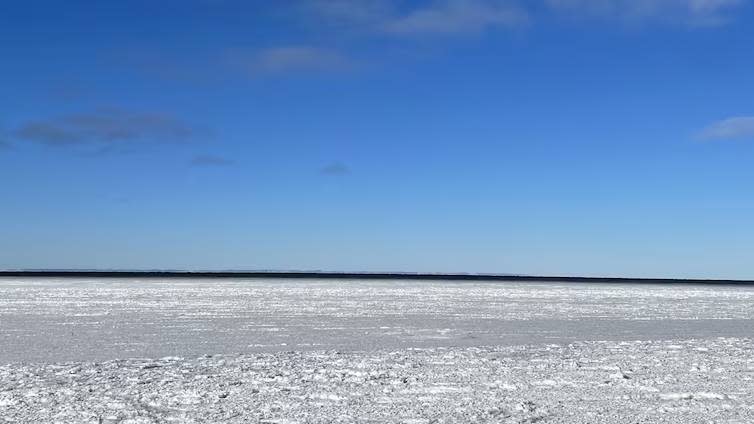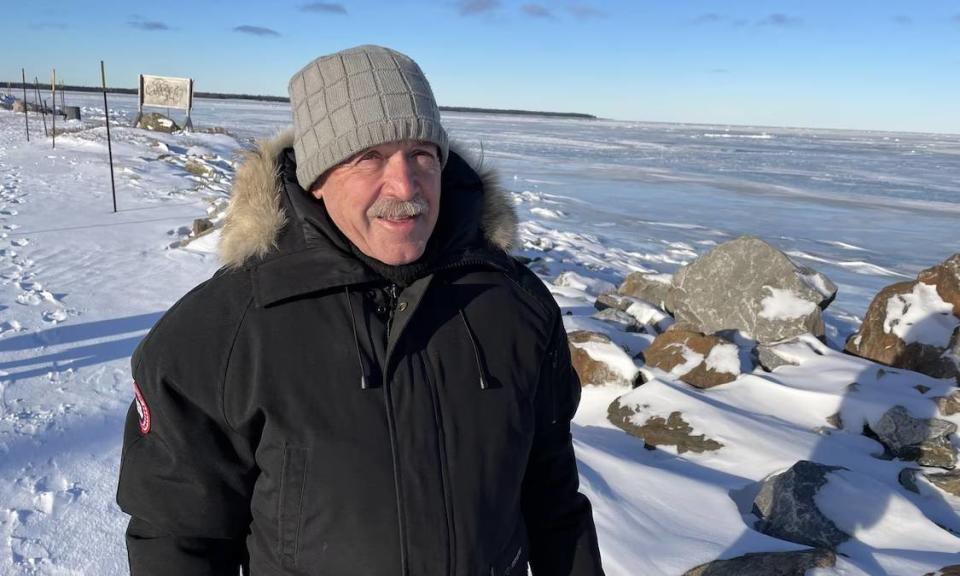St. Lawrence River's ice floe is late for 5th consecutive year

For a fifth consecutive winter, the ice cover is slow to form on the St. Lawrence River, and the delay is even worse than expected.
"We have almost no ice," said Peter Galbraith, a physical oceanography researcher at the Maurice Lamontagne Institute in Mont-Joli, Que.
The institute is in the province's Lower St. Lawrence region on the river's southern shore, west of the Gaspé Peninsula. Aside from some ice along the banks, the river there has yet to freeze over thanks to the warm, rainy December.
Data from the Canadian Ice Service, whose records date back to 1969, show this is unusual. The current volume of ice is the third lowest ever recorded.
"We should have the entire estuary frozen," said Galbraith. "If we look at yesterday's ice map, there is practically nothing across the Gulf of St. Lawrence." Galbraith said there is a little ice on the banks in two regions: the Lower St. Lawrence and the Lower North Shore.
Measurements taken last week by the researcher indicate that the river temperature is still 1.5 C. While the temperature is expected to drop in the coming days, the mild spell that will follow does not bode well.
He said –4 or –5 in Rimouski, Que., will not be enough to form a good ice cover.

According to Peter Galbraith, the coastal ice should already extend as far as Sainte-Anne-des-Monts, in the Gaspé, and as far as Sept-Îles, on the North Shore. (Radio-Canada)
"We cannot have a winter filled with wall-to-wall ice in the Gulf of St. Lawrence. It's already too late for that," he said.
Galbraith said coastal ice should already extend as far as Sainte-Anne-des-Monts, in the Gaspé, and as far as Sept-Îles on the North Shore.
However, winter can still be surprising and, in a few weeks, "we could catch up a lot, especially if the water reaches freezing point," he said.
Ice fishing is one of the popular winter activities that have been significantly delayed across southern Quebec. But this has become the norm in recent years, said Gaston Dionne, who is with the Rimouski river smelt fishermen's association (APER).
The organization was established in 2000, and from 2000 until 2015, huts were set up every year on the ice floe at the beginning of January. Then, in 2017 and 2021, APER was unable to put huts on the ice floe because the ice bridge had not been built.
"Last year, we started very late, on Feb. 7," said Dionne, who warns people to be cautious on the ice as it is slow to thicken.

Ice fisherman Gaston Dionne calls for caution on the river ice, which is slow to thicken and not ready yet for ice fishing. (Marie-Christine Rioux/Radio-Canada)
Dionne hopes to have his own hut set up by the end of the month, he said, and fish until mid-February as usual. He said the temperature needs to hover around –15 for the ice to reach a thickeness of 20 centimetres — thick enough that a bridge can be built between the mouth of the Rimouski river and Saint-Barnabé Island.
For now, the ice is about 12 centimetres thick, which is too thin to fish — even without a shack.
"This is what is expected with climate change, but in a time frame that is still quite long," said Galbraith. "We're talking about a hundred years to see average conditions without ice and occasional winters with ice cover."
That's why the rapid change in average temperatures is alarming, he explained.
The statistics are contradicting the forecasts, because during the last five years, "we have had very late ice covers. It's not at all random what we're experiencing right now," he said.
Galbraith monitors the environmental impact of diminishing ice cover. He said the gulf's banks are further exposed to high tides when there is no ice and this makes them more vulnerable to erosion.
Last winter was nearly the sixth without ice. Years that had no ice include 1958, 1969, 2010, 2011 and 2021.

